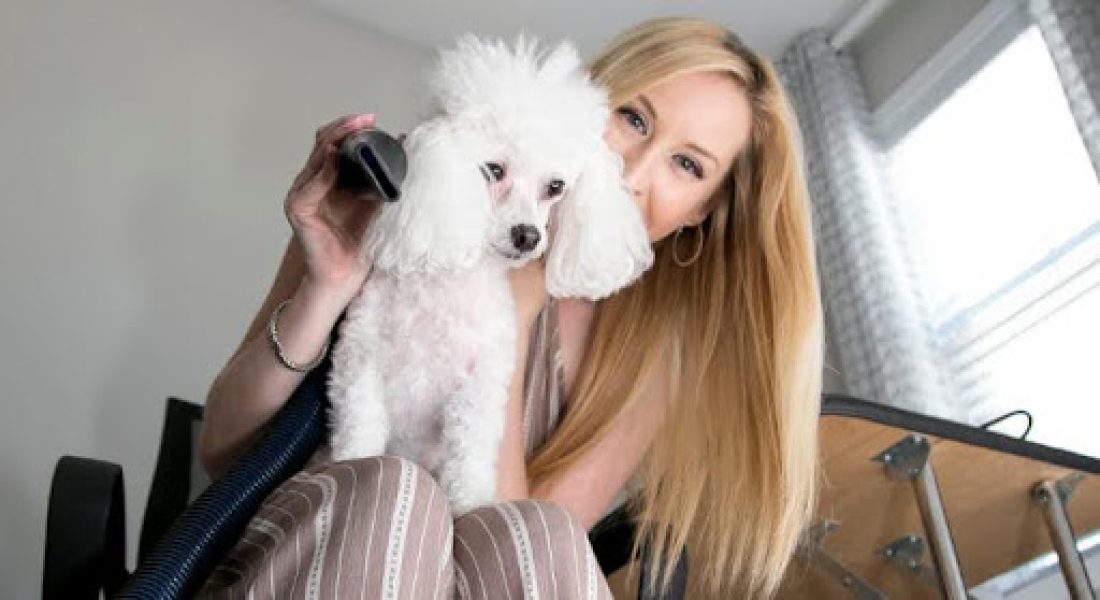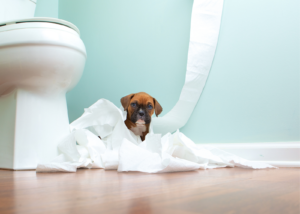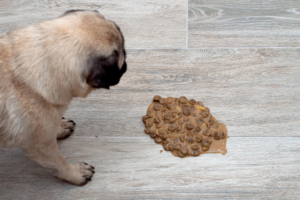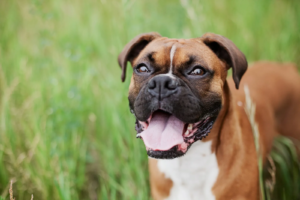Are you looking to spruce up your pup without breaking the bank? DIY dog grooming is a great way to keep your four-legged family member looking cute!
With just a few simple tips and tricks, you can easily turn basic grooming tasks into enjoyable experiences for both of you. Here we’ll walk you through the basics of DIY dog grooming so that you can keep them looking their best and love doing it!
Brushing
Regular brushing is essential for maintaining your dog’s coat, preventing tangles, and promoting healthy skin. The frequency of brushing depends on your dog’s breed and coat type. But as a general rule, you should brush them at least once a week.
- Short-haired dogs – A soft-bristle brush or rubber curry brush will do the trick.
- Medium to long-haired dogs – A slicker brush or a pin brush is ideal for detangling and removing loose fur.
- Double-coated breeds – Use a de-shedding tool such as an undercoat rake to remove dead hair from their thick undercoat.
Remember to always be gentle and use treats to keep your dog calm and happy during the grooming process.
Bathing
Just like humans, dogs need regular baths to stay clean and healthy as well! Here are some tips for bathing your dog at home:
- Gather all necessary supplies – Dog shampoo, towels, cotton balls, ear cleaner, and a non-slip mat.
- Brush your dog’s coat first – This will help remove any loose fur and make the bathing process more manageable.
- Use lukewarm water – Avoid using hot or cold water as it can irritate their skin.
- Use a gentle, dog-specific shampoo – Human shampoos are too harsh for their sensitive skin.
- Avoid getting water in their ears – Use cotton balls to protect their ears from getting wet. This can lead to infections!
- Rinse thoroughly – Make sure to rinse off all the shampoo and avoid leaving any residue on their coat which can cause skin irritations.
- Dry them off – Use a towel or a hairdryer set to low heat to dry your dog’s coat. Be sure to keep the hairdryer at a safe distance from your pup.
Nail Trimming
Long nails can be uncomfortable for dogs and make it challenging for them to walk properly. It’s essential to trim their nails regularly, even if they dislike it. If you don’t keep up with their nails they can break or split them which is very painful! Here are some tips for trimming your dog’s nails safely:
- Get the right tools – Use a dog-specific nail clipper or grinder to avoid damaging their nails.
- Make sure your dog is comfortable – If your dog becomes anxious, take a break and try again later.
- Avoid cutting the quick – The quick is the blood vessel running through your dog’s nail. Cutting it will cause bleeding and pain. You can usually visibly see it in their nails.
If you accidentally cut the quick, apply styptic powder or cornstarch to stop the bleeding.
And remember, always reward your dog with treats and praise after every successful nail-trimming session so they can learn to love the process!
Teeth Cleaning
Keeping your dog’s teeth clean is crucial for their overall health. Poor dental hygiene can lead to gum disease, which can cause infections and other health issues. Here’s how you can maintain your pup’s oral hygiene:
- Introduce dental care early – Start brushing your dog’s teeth from a young age to get them used to the process.
- Use dog-specific toothpaste and brushes – Human toothpaste contains ingredients that can be toxic to dogs.
- Brush regularly – Ideally, you should brush your teeth daily, but at least three times a week is also good.
- Be gentle – Use circular motions to brush your dog’s teeth and focus on the gum line.
If brushing your dog’s teeth is too challenging, there are dental treats and water additives available that can help reduce plaque and tartar buildup.
How Often Should I Bathe My Dog?
The frequency of bathing your dog depends on several factors, including their breed, coat type, and lifestyle. Here are some general guidelines to follow:
- Short-haired dogs – They can go longer periods without baths as their coat doesn’t trap dirt and oils as easily. Ideally every 1-3 months.
- Medium to long-haired dogs – They may need more frequent baths, especially if they have a thick coat that easily mats. Ideally every 4-6 weeks.
- Dogs with skin conditions – If your dog has skin issues, consult with a veterinarian for the best bathing schedule.
- Active dogs or outdoor dogs – Dogs that spend a lot of time outdoors or love to roll around in the dirt may also need more frequent baths.
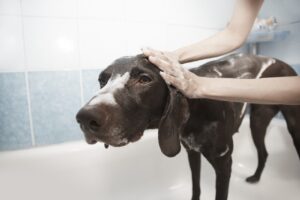
As a general rule, most dogs can go 1-2 months between baths. However, if your dog starts to smell or their coat looks dirty, it’s time for a bath.
Remember, over-bathing your dog can strip their coat of its natural oils and cause skin irritation. Never bathe them more than once a week. If you’re unsure about how often to bathe your dog, consult with a professional groomer or veterinarian for personalized advice.
Tips for Successful DIY Dog Grooming
Aside from the basic grooming tasks mentioned above, here are some additional tips to make your DIY dog grooming experience a success:
First, invest in quality grooming tools such as brushes, combs, and nail clippers. It may be tempting to opt for cheaper alternatives, but they may not give you the best results.
Secondly, always use products that are specifically made for dogs. Human products can be harmful to their skin and coat.
Thirdly, make sure to groom your dog in a quiet and well-lit area. This will help keep your dog calm and make it easier for you to see what you’re doing.
Also, remember to be patient with your pup, especially if they are new to grooming. It may take some time for them to get used to the process, so be gentle and give lots of praise and treats.
Lastly, don’t hesitate to seek professional help if you’re not confident in your grooming skills or if your dog has particular grooming needs. A professional groomer can provide expert advice and handle more challenging tasks such as breed-specific haircuts.
Conclusion
Grooming your dog can be a fulfilling and bonding experience for you and your pup. By following these basic tips and guidelines, you can ensure that your dog receives proper grooming while saving time and money.
Remember to always prioritize your dog’s comfort and safety during the grooming process, and don’t hesitate to seek professional help when needed. With regular grooming sessions, your furry friend will not only look good but also feel good. Happy grooming!
